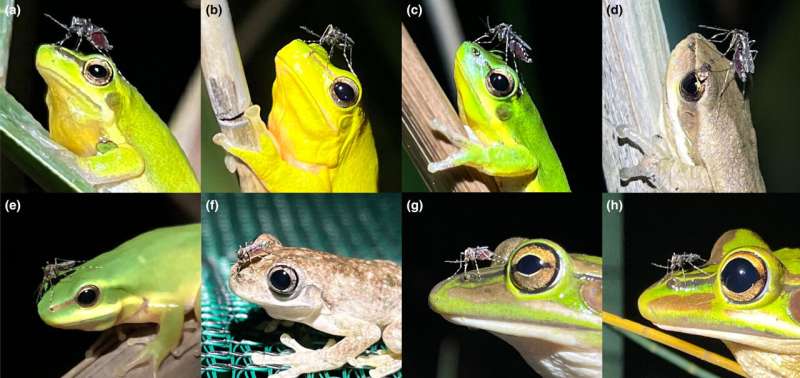Climate Change Drives New Cases of Malaria, Complicating Efforts to Fight the Disease
The number of malaria cases rose again in 2022, propelled by flooding and warmer weather in areas once free of the illness.
There were an estimated 249 million cases of malaria around the globe last year,
the World Health Organization said on Thursday, significantly more than before the Covid-19 pandemic and an increase of five million over 2021. Malaria remains a top killer of children.
Those new cases were concentrated in just five countries: Pakistan, Nigeria, Uganda, Ethiopia and Papua-New Guinea. Climate change was a direct contributor in three of them, said Dr. Daniel Ngamije, who directs the W.H.O. malaria program.
In July 2022, massive flooding left more than a third of Pakistan underwater and displaced 33 million people. An explosion of mosquitoes soon followed. The country reported 3.1 million confirmed cases of malaria that year, compared with 275,000 the year before, with a fivefold increase in the rate of transmission.
“With the very heavy monsoons we expected these consequences, but not up to this magnitude,” said Dr. Muhammad Mukhtar, director of Pakistan’s national malaria control program.
While floodwaters have receded in some areas, vast tracts of standing water remain, and the malaria parasite is now well-established and circulating in communities that had little prior immunity, Dr. Mukhtar said.
More than seven million bed nets were given out to displaced people, but people who are living in small tents or in big crowded halls have nowhere to hang them, Dr. Mukhtar said. The country is relying on insecticide spraying to try to control mosquitoes and mass administration of anti-malarial drugs.
Pakistan has confirmed 2.3 million malaria cases so far this year and expects the total to be even higher than the total from 2022.
“It will take another one to two years for the situation to become normal if, God forbid, there is not another natural disaster,” Dr. Mukhtar said.
In Pakistan, as in other places where weather emergencies drove malaria’s spread, new mosquito habitat was only part of the problem. The floods damaged 2,200 health facilities, leaving millions of people without access to treatment in affected districts.
The number of deaths from malaria worldwide stayed largely stable between 2021 and 2022, but at an estimated 608,000 it was still significantly higher than the total of 576,000 in 2019, before the Covid pandemic.
Deaths had fallen steadily from 2000 to 2015, because of a wide push to make better diagnostics and treatments, as well as insecticide-treated bed nets, widely available across malarial areas in sub-Saharan Africa. But growing resistance to those drugs and insecticides, plus stagnating funding and changes in mosquito behavior,
have combined to stall that progress. Covid has further disrupted both health services and supply chains.
The changing climate was also at least partly responsible for a rise in malaria in Ethiopia (with 1.3 million more cases than it had the year before) and Uganda (with 600,000 more), Dr. Ngamije of the W.H.O. said. Highland areas that had long been too cool and dry to support the breeding of malaria-transmitting mosquitoes have started to report cases in those two countries.
In Ethiopia, large civil conflicts that displaced millions of people also made them newly vulnerable to malaria. Conflict drove the spread of malaria in other areas, as well: Cases increased more than sevenfold in Myanmar, for example.
And Ethiopia is among African countries where
an invasive mosquito species, Anopheles stephensi, which thrives in urban areas once largely free of malaria, is now spreading the disease.
In Uganda, there are also worrying signs that
the malaria parasite is growing resistant to the main medication used to treat the disease.
Nigeria, the country with the highest burden of malaria, also saw extreme flooding in 2022. The country managed to keep the rate of new infections stable, but its rapid rate of population growth meant there were an additional 1.3 million cases.
Climate change is also driving malaria cases where people are displaced by drought, heat waves and storms, leaving them in substandard housing, Dr. Ngamije said. Weather disasters disrupt the supply chains of malaria tests, treatments and insecticides. Food insecurity, rising in sub-Saharan Africa because of floods and droughts, means more children are malnourished, and thus more susceptible to severe malaria. Repeated malaria infections keep children out of school, and wipe out the savings of the lowest-income families in affected countries.
The malaria report did contain some good news. Azerbaijan, Belize and Tajikistan were all certified as malaria-free by the W.H.O. in 2022.
More than two million children in Ghana, Kenya and Malawi had received at least one dose of a new malaria vaccine by the end of 2022. Vaccination coverage will be broadened to 12 more countries next year. There has been
a 13 percent drop in child deaths over four years in the areas where the first malaria vaccine has been administered.
Dr. Ngamije said he had hoped that the 2022 malaria data would show global cases falling rather than rising. But the W.H.O.’s approval of a second malaria vaccine that will rapidly increase supply, plus the growing availability of bed nets treated with multiple kinds of chemicals to counter the effect of insecticide resistance, make him optimistic that there will be significant progress next year.
“If it turns out to be a normal year,” he said.
The number of malaria cases rose again in 2022, propelled by flooding and warmer weather in areas once free of the illness.

www.nytimes.com
/cloudfront-us-east-2.images.arcpublishing.com/reuters/U62ELQBZQRNIPHC5RBXL3VT7AY.jpg)



